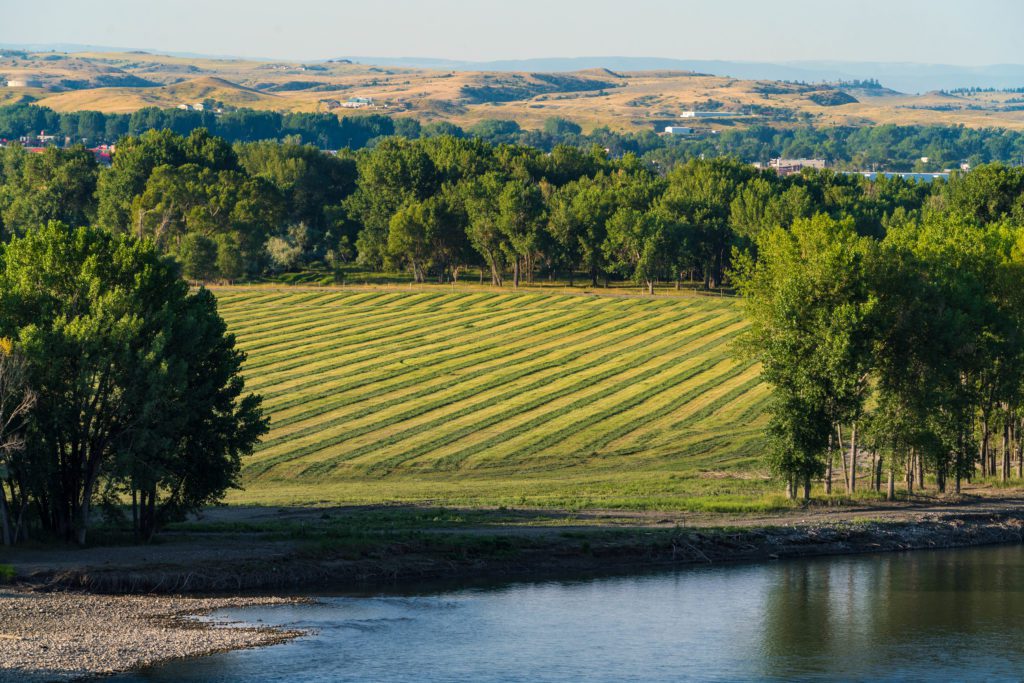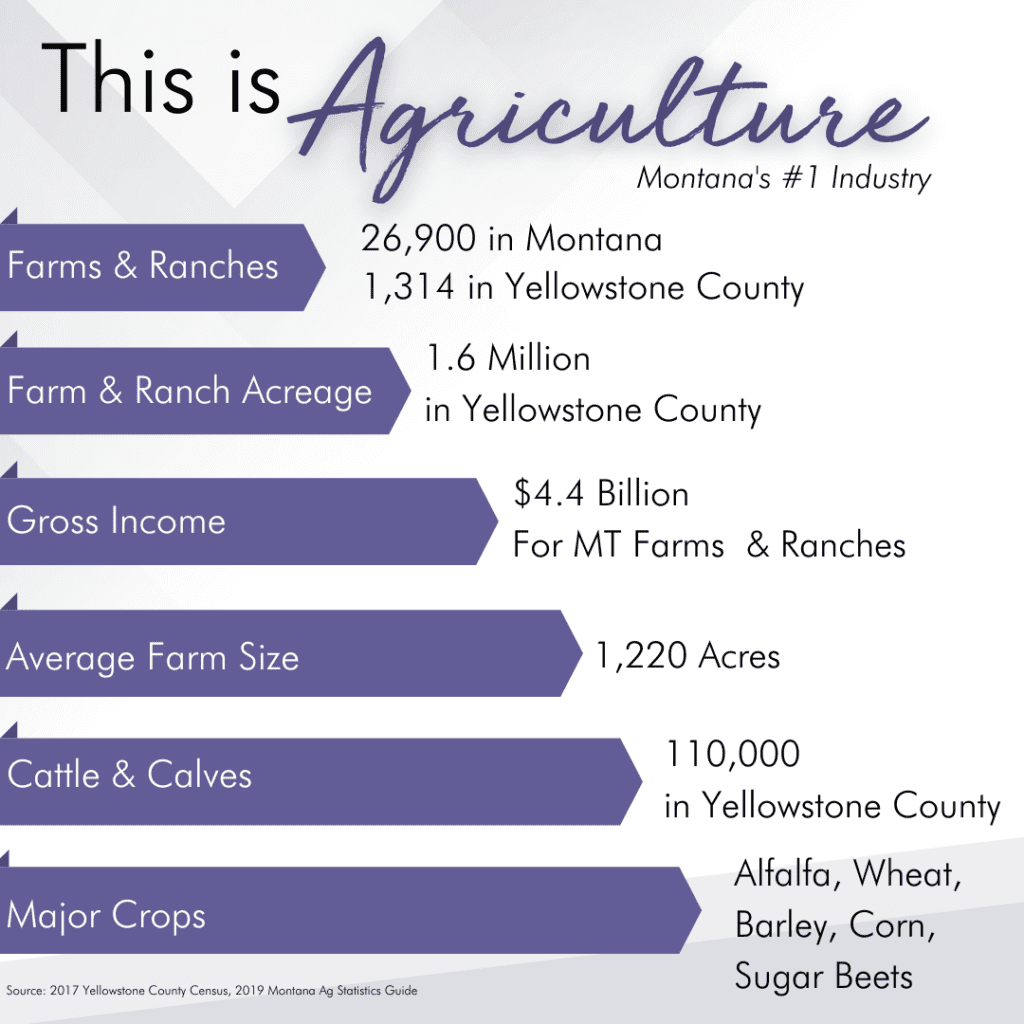Agriculture
Driving through Billings, it is easy to see the presence of industries like healthcare, oil and gas, and education; however, the equally essential agriculture industry cannot be overlooked. Agriculture is Montana’s number one industry, contributing more monetary value ($4.4 billion) to the state’s economy than any other industry. And it’s not just farmers and ranchers that make up the industry. Businesses like agriculture supply stores, implement dealers, agricultural broadcasting, seed suppliers, banks and agrichemical manufacturers also add to the agricultural sector.
The primary income drivers for Yellowstone County agriculture are crop and livestock production. Differing from the state average, Yellowstone County’s livestock-related revenue is typically greater than crop-related revenue. In 2019, Yellowstone County ranked third in the state for cattle inventory. The county is also home to sheep, dairy and hog production, as well as many feedlot operations. Billings has two livestock yards, PAYS (Public Auction Yards) and BLS (Billings Livestock Commission) that continue to market a high volume of cattle statewide and via Northern Livestock Video auction. Horse, sheep, and goat sales also take place at the local sales yards.
While the fields of crops are easy to see, it’s important to remember that a majority of Yellowstone County’s land is rangeland or pasture. Most of that land is devoted to raising the high-quality beef cattle that Montana is proud to have. Cow/calf operations are scattered throughout the county with calves commonly shipped to the Midwest in the fall. There, they are fed well-rounded rations until they are “finished.” At that point, it’s only a matter of time until consumers have access to nutritious beef in the grocery store or restaurant!
Yellowstone County is geographically diverse, with some of the most developed farming systems in the state. The Yellowstone River runs the length of the county and separates the dryland farming areas to the north and south. The areas east and west of Billings, along the river, showcase the fertile irrigated lands. If you live outside the city limits, chances are good that you will be near some form of agriculture.
The major crops grown in Yellowstone County are alfalfa, wheat, barley, corn, and sugar beets. Alfalfa and other hay grown in the area is predominantly raised and saved to feed livestock during the colder months. Because of the county’s cool weather and snowfall, livestock need to be supplemented with hay in order to ensure their nutrient requirements are met. Cows are typically in their second and/or third trimester of pregnancy during the winter, so their nutrient requirements are even higher.

Of the wheat raised in Yellowstone County, most is winter wheat. For example, area producers planted 59,000 acres of winter wheat in 2018 at an average yield of 49 bushels to the acre generating 2.84 million bushels (Source: Montana Annual Bulletin, 2019 USDA, National Agricultural Statistics Service). One bushel of wheat yields approximately 42 pounds of white flour, so that’s a lot of bread, tortillas and cakes! Winter wheat is planted in the fall and takes advantage of Yellowstone County’s fall and winter moisture, whereas spring wheat is planted in the spring. Spring wheat is not as well-suited for this region’s climate and therefore not as commonly grown.
Most of the barley raised is for animal consumption or malting purposes. Montana is known for producing some of the highest quality barley in the country, and a lot of that barley is used for products like beer. Several large beer companies use Montana barley for their products, including Molson Coors (formerly MillerCoors), which has a facility located near Huntley a few miles east of Billings.
Corn grown in Montana and Yellowstone County is mainly used for animal feed. You’ll find most of the county’s corn in the irrigated regions; however, dryland corn is getting to be more and more common. Corn can be chopped for silage or combined for grain.
Sugar beet production is relatively unique to Montana and something that sets Yellowstone County apart from many other counties. Area sugar beet growers are part of the Western Sugar Cooperative. As growers and shareholders in the cooperative, they strive to produce high quality sugar. Tonnage or yield and sugar content of their beets is very important!
Finally, the Yellowstone County Extension Service provides an invaluable service for producers, home owners and youth through programs such as 4-H, Family and Consumer Services and the Montana State University Experiment Station located near Huntley. The Southern Agricultural Research Center is one of seven research centers throughout Montana. This research center is a 462 acre facility that resides along the Yellowstone River about twenty miles east of Billings. The primary function of this research center is to conduct educational programs for dryland and irrigated areas in South Central Montana.
Click here to learn more about joining the Chamber Ag Committee.
Click here to learn more about the Annual Ag Appreciation Banquet.
Click here to learn more about the Ag Tour.

